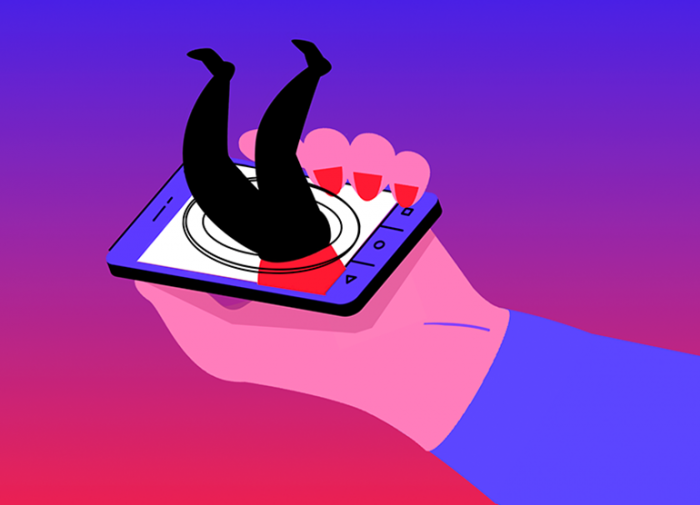Though still a relatively new field, user experience (UX) design has earned a spot as one of the most in-demand hard skills across all business sectors. The future looks bright, too; the U.S. Bureau of Labor Statistics predicts the growth rate for digital developers and designers will top 20% over the next 10 years.
So if you’re a graphic designer looking to expand your skill set or make a more drastic career pivot, how do you get the skills to be in UX?
User experience describes the process of designing products or systems with the end customer’s journey in mind, all the way from discovery to checkout. The field as we know it was only formalized in the mid-1990s, and specialized degree programs are still few and far between. Nevertheless, there’s been an explosion of online resources—and the real challenge is deciding what’s truly worthwhile.
Whether it’s mining YouTube for hyper-specific tutorials or committing your time to a self-taught approach, trial-and-error only takes you so far. Luckily, for true beginners and those who want to uplevel at light speed, there’s another alternative: bootcamps. (No, they’re not just for coders.)
Let’s break down what UX design bootcamps can help you accomplish and which programs you should consider.
The good and the bad of bootcamps
Bootcamps, by definition, take an intensive approach to learning the basics of design. The workload—often akin to a full-time job—is required to reach what can be elusive goals: UX mastery or, for those with no design experience, simply getting a rock-solid footing. While some bootcamps can be up to a year long, they usually range from three to six months.
One primary draw of bootcamps is their emphasis on professional success. Many even come with job guarantees and explicitly make mentorship and networking a part of the curriculum. There may be some design theory involved, but students dedicate much of their time to practical work and cultivating a portfolio that will get them hired.
What bootcamps usually are not is a leisurely earning environment. Peruse enough reviews or Reddit posts and you’ll notice one recurring piece of conventional wisdom: You get out what you put in. Real results require a big commitment, so don’t expect to be able to create a flawless wireframe through osmosis.
Then comes the cost. Bootcamps don’t carry quite the same price tag as a degree program, they can still be a significant investment ranging anywhere from a few thousand dollars to $20,000.
So how can you discern if a bootcamp is right for you and what criteria to use when selecting one?
Stella Guan, a designer and former instructor at General Assembly, outlines a few practical considerations. With so much content packed into such a short time, those who really want to get acquainted with design principles could have trouble taking it all in. If that’s you, it might be worth seeking an alternate route. And where portfolios are concerned, a highly-standardized curriculum means “many students will inevitably produce portfolio pieces that look very similar to another bootcamp graduate’s.”
The Four Best Programs Now
Whatever your UX design goals are, odds are there’s a bootcamp for that. From budget-conscious picks to those that boast a built-in network, here’s what the landscape looks like today.
Based in Berlin but now fully online, CareerFoundry offers both six-month (30-40 hours per week) and 10-month (15-20 hours per week) bootcamps. Its courses are split into three modules: Intro to UX design, UX immersion, and specialization, where students can dive deeper into voice interface design, UI, or frontend development for designers.
It also includes a career services team to help get a head start on job hunting and bakes portfolio building into the curriculum. Aladrian Goods, a content designer at Intuit and CF grad, describes the professional guidance as especially welcoming, featuring “holistic self-care, networking, job search, and career change strategies.”
The price puts it around the middle of the pack, with the full course running between $7,000 and $8,000.
General Assembly (GA) is already well-known for data science and coding bootcamps, and now its expanded offerings include UX design. GA’s three-month, six-unit course was built in partnership with executives from companies like WarnerMedia and Tigerspike to boost industry relevance.
Like other bootcamps, GA covers fundamentals and foundations, but coursework goes further to include real-world scenarios like UX/UI handoffs and design critique. It also offers a Career Services Program, hiring panel discussions, guest talks, and more. It’ll cost you, though. General Assembly’s full tuition runs close to $16,000.
Springboard offers fully-online courses aimed at people without any design background, with a part-time curriculum spaced out over nine months. At $11,900, this is a slightly more expensive course, but its learn-at-your-own-pace structure also means students don’t need to give up their full-time jobs to enroll.
While Springboard does carry a “Job Guarantee,” the prioritization on mentorship and on-the-job experience should be just as enticing to many new designers. All students are assigned a one-on-one mentor to provide coaching, and the curriculum also features an externship with a real client. In comparison to mock projects, that’s a big leg up for the CV.
Where options that won’t break the bank are concerned, Avocademy covers everything from user research to prototyping and testing in just two months. Paced out at 15 hours per week, it’s also a lower-risk endeavor, given that the total cost is just under $2,000.
One graduate saw flexibility as a key differentiator of Avocademy’s style of portfolio development. To limit the risks of coming out with a “cookie cutter” portfolio, they write, “You have the chance to choose your own project and build it yourself.”



